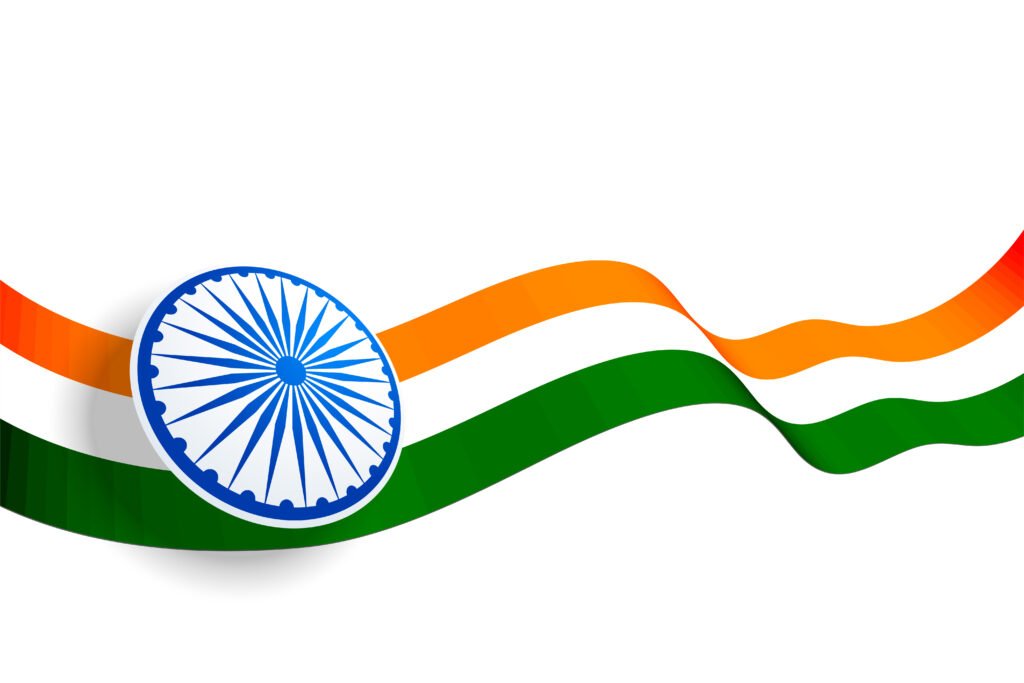Explore the rich history and symbolism of the Indian national flag designed by Pingali Venkaiah. Date and setting, the journey to the final design, and the significance of the three colours. Witness the historic unveiling and learn about the evolution of the flag. Understand the National Flag Act and the importance of respecting this symbol of India’s independence and unity.
Pingali Venkaiah, a multifaceted personality and dedicated freedom fighter, is the creative force behind the iconic national flag of India. Born in Andhra Pradesh on March 2, 1876, Venkaiah’s journey from becoming a linguist, geologist and agriculturist emerged as a key figure in India’s freedom struggle.
In 1921, Venkaiah presented a vision of a national flag to the Indian National Constituent Assembly, with fields of saffron, white and green, with the navy blue Ashoka Chakra in the centre each colour carrying a deeper meaning as it represents courage, truth and faith. The Ashoka Chakra symbolising the eternal code completed the symbolism of the three colours.
The National Flag of India was unveiled on August 15, 1947, as a symbol of the victory of independence. Today, it stands as a testament to Venkaiah Naidu’s vision and the nation’s resilience. This is the inspiring story of the man behind the design that flies proudly as the national flag of India.

The Story Behind the Indian National Flag’s Designer
The national flag of India stands as a powerful symbol of the nation’s sovereignty and identity. Made of three horizontal saffron stripes of white and green, with a nine-blue ashoka chakra in the centre of the white stripe, the flag is inspired by India.
The design of the tricolour flag is not only a visual representation but also a testament to India’s journey to independence tricolour. Each colour has a symbolic meaning, with saffron representing courage and sacrifice, white representing truth and peace, and green representing faith, fertility and courage Ashoka Chakra The 24 spoke wheel is a nod to Emperor Ashoka’s religion and is a symbol of legal righteousness.
The story behind the designer of India’s national flag adds extra interest to its story. They honour Pingali Venkaiah, the unsung hero of India’s freedom struggle. An accomplished linguist, geographer and fierce nationalist, Venkaiah’s program was adopted by the Constituent Assembly on July 22, 1947. His dedication to the cause of India was among his creative energies that left an indelible mark on the country’s history, making the flag not just a blanket of triviality but a living symbol of India’s unity in diversity.
The Architect of the Tricolor
Pingali Venkaiah, is often credited with playing a pivotal role in creating the Indian national flag. Born on August 2, 1876, in Bhatlapenumarru, Andhra Pradesh, Venkaiah Naidu was a multifaceted personality of various talents and was actively involved in the Indian independence movement.
Studying subjects like geography, agriculture and law, Venkaiah’s passion for his country’s independence led him to take an active part in the struggle against British colonial rule but it was his artistic talent that forced him to give him a national flag that was no different from Venkaiah’s original design. In the centre is a white cloth and dark green earth, symbolizing courage and sacrifice, truth and peace, faith and courage
As his policy laid the groundwork, the iconic freedom fighter and renowned poet Rabindranath Tagore reimagined the white cloth with his addition of the Ashoka Chakra, a powerful religious emblem. A true legacy, Pingli Venkaiah’s impact on the visual representation of Indian identity cannot be overstated. It was his tricolour design that was formally adopted by the National Assembly on July 22, 1947, solidifying its place as the beloved national flag that unites India in all its diversity.
The Journey to the Final Design
This Flag March’s final design was a particular effort that mirrored society’s thoughts and dreams. To start, a committee was appointed to gather input from talented artists, historians, and community members. And numerous recommendations were submitted, each showcasing a different viewpoint on the region’s past, culture, and prospects. After thorough review and open debate, a select few designs were chosen.
The decision-making process involved a local voting system to ensure the majority’s voice was described. It was a democratic process to promote a sense of unity and rights among citizens.
The ultimate plan holds a profound meaning through its carefully selected shades and symbols. The shades such as dazzling blue and green effectively get the region’s stunning landscapes and advancing agriculture. Furthermore, the symbols incorporated into the flag, whether rooted in history or modern symbolism, embody a sense of common values and collective identity. These thoughtful choices contain a desire to honour the past while welcoming the opportunities of the future, resulting in a flag that unifies and invests a sense of pride in the whole community.
Unveiling the Flag
The historic moment in the history of India’s freedom struggle when the national flag of India was hoisted for the first time, the waterfall embodying the aspirations of the freedom-seeking nation unfolded on August 15, 1947, at the Red Fort in Delhi.
When Jawaharlal Nehru, the first Prime Minister of independent India went forward to hoist the tricolor with an air of optimism. The colours of saffron, white and green radiated a spirit of unity and diversity and embodied the essence of the newly independent nation. The spinning wheel, a symbol of trust at the centre of the white ribbon reinforced India’s commitment to economic independence.
The significance of this act went beyond mere symbolism. It spoke volumes about the countless freedom fighters who gave their lives for the cause to blow. The unveiling of the national flag marked the culmination of decades of relentless anti-colonialism. It heralded a new era in which India would forge its destiny independent of the horns of foreign domination.
The hoisting of the national flag at the Red Fort became an indelible symbol of India’s hard-fought independence and a beacon of hope for millions who dreamed of a sovereign, democratic state. Along with its poignant symbolism, the tricolour embodied the spirit of resilience and determination that defined India’s journey to independence.
Evolution of the Flag
The flag evolved into a dynamic symbol of the nation’s identity and historical course. Flags have changed dramatically in design and use over the years. Originally a useful identifier in battle, the flag evolved into a powerful symbol of unity and patriotism.
Research on design has often reflected political change and cultural change. The colours, symbols and symbols embedded in the flag communicate the values and aspirations of the nation. For example, the flag of the United States has changed as stars have been added to represent new countries, each change symbolizing growth and expansion.
Flags have also adapted to technological advances. New materials and architectural techniques are often added to modern flags for durability and visibility. Furthermore, the introduction of digital media has expanded the possibilities of flagging, providing instant access to a global audience at important events
It compares changes in consumption patterns to social changes. Flags are now used in contexts other than the countries they represent, symbolizing causes, groups and institutions. The evolution of the flag tells the story of the country, providing a visual history of its history, values and collective demographics.
The National Flag Code
The Indian National Flag Act, also known as the Indian Flag Act, defines the specific guidelines and rules for the use and display of the Indian national flag. According to its laws, the national flag must be treated with the utmost respect and dignity. It should never be used as a utility, and its function must meet certain criteria to maintain its dignity.
The guidelines stipulate that the national flag should be made of hand-woven leather or silk, its design should conform to specific standards and it should be raised and lowered vigorously at all times as a symbol of national pride and loyalty
With respect to other flags, the Code also emphasises the proper placement of the flag, ensuring that it is visible. When displayed horizontally, the saffron column should be at the highest point, while when projected horizontally, the saffron column should be on the right.
Respecting the national flag is important because it symbolises national pride, identity and sovereignty. Disrespecting the flag, such as defacing it or using it for improper purposes is not only a violation of the Flag Act but also a disrespect to national honour Guidelines are followed to ensure the flight of the national flag has been a symbol of unity, patriotism and national pride.
Conclusion
Pingli Venkaiah Naidu, the unsung hero of India’s freedom struggle, played a pivotal role in creating the country’s national flag, a symbol that stands beyond time as a testament to India’s hard-fought independence and unity. Born on March 2, 1876, in Andhra Pradesh, Venkaiah Naidu was a multifaceted, freedom fighter, linguist and visionary.
Venkaiah Naidu’s journey as a national flag began with the independence movement, where he was actively involved in advocating India’s independence. His understanding of the power of symbolism leads him to consider flags that can represent national diversity and unity. During the session of the All India Congress Committee at Bejwara (now Vijayawada) in 1921, he gave his opinion on the national flag as a symbol of Indian identity.
The flag unveiled by Venkaiah had horizontal red and green stripes, representing the main Hindu and Muslim communities, a small white middle class and the purity of the symbol of the country’s freedom struggle.
Though there were some changes in Venkaiah’s policy, such as replacing the Kataka Chakra with the Ashoka Chakra, his support remained significant on July 22, 1947. The tricolor flag was recognized as an independent India of the national flag the 24-syllable Ashoka Chakra represents righteousness and equality.
The Indian national flag carries enduring significance as a powerful symbol of unity, diversity and the country’s hard-fought independence. It trembles with pride as it speaks of the dreams and aspirations of 10 million people. Each colour and symbol speaks of sacrifice, resistance and the philosophy of a united nation. Beyond its physical presence, the flag commemorates India’s journey from colonialism to independence and Venkaiah’s policy of diasporic solidarity has inspired generations, stirred pride and patriotism, a tree of thought and the national flag of India is the enduring symbolic spirit of the nation.
In conclusion, the design of the Indian National Flag, envisioned by Pingali Venkaiah, symbolizes India’s struggle for freedom, its rich cultural heritage, and the values of bravery, peace, and truth. It stands as a reminder of the unity and diversity that define the nation. For more enriching stories and educational insights, explore Chrysalis High.


